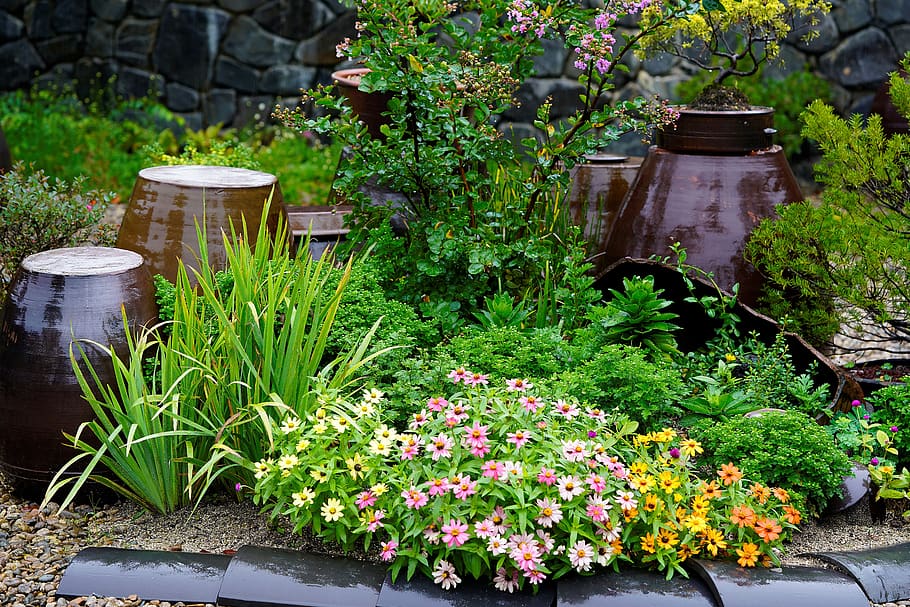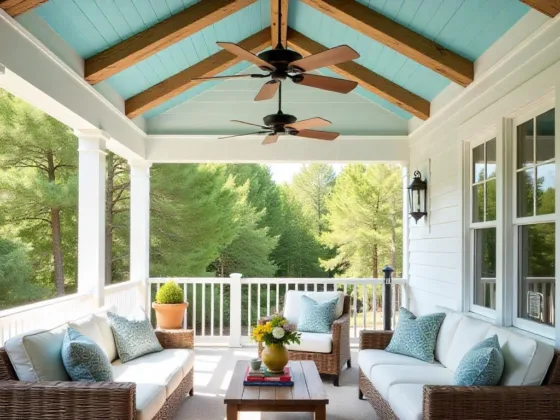Every seasoned gardener knows that a garden is an ever-changing environment; what it starts out as in the beginning is rarely what it is a few years down the road. The same is also true for the rest of our landscapes; our yards, as the trees and shrubs mature and fill in, or even our lawns.
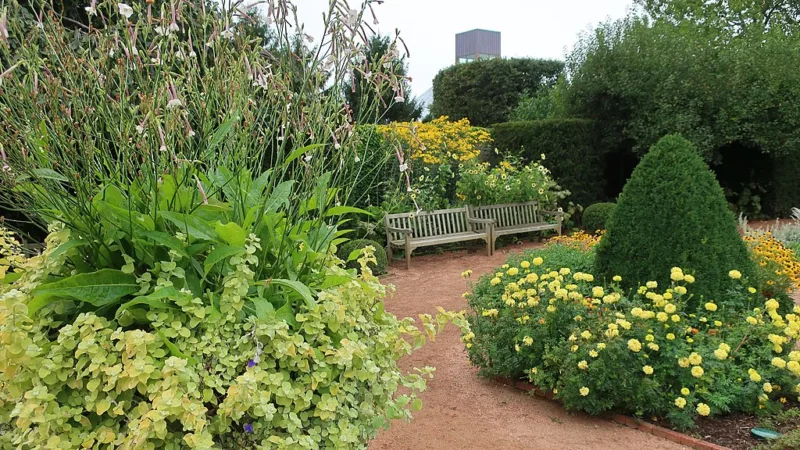
Plants are living things that grow and change with time, and because our landscapes are dominated by these venerable forms of life, they change along with them.
It’s relatively easy to plan a landscape in consideration of these changes at the level of trees and shrubs, because these grow relatively slowly, and are quite predictable in terms of their growth habits.
But gardens can be quite another story; they can evolve and transform themselves over just a couple of years, often bearing no resemblance to your original intentions and designs.
The Garden As A Competitive Microcosm
Gardens are inherently competitive environments. It may be helpful to think of a garden as a closed ecosystem, a microcosm of plants coexisting and hopefully living in harmony with each other.
Besides interactions with their surrounding environment, the lives of your garden plants become intertwined with each other because they grow in such close proximity.
They share physical space, they share soil, moisture, and sunlight, and share similar growing conditions, such as soil and rain. Because no one specific set of growing conditions is ideal for all plants, some will excel and outperform while others will underperform or even languish.
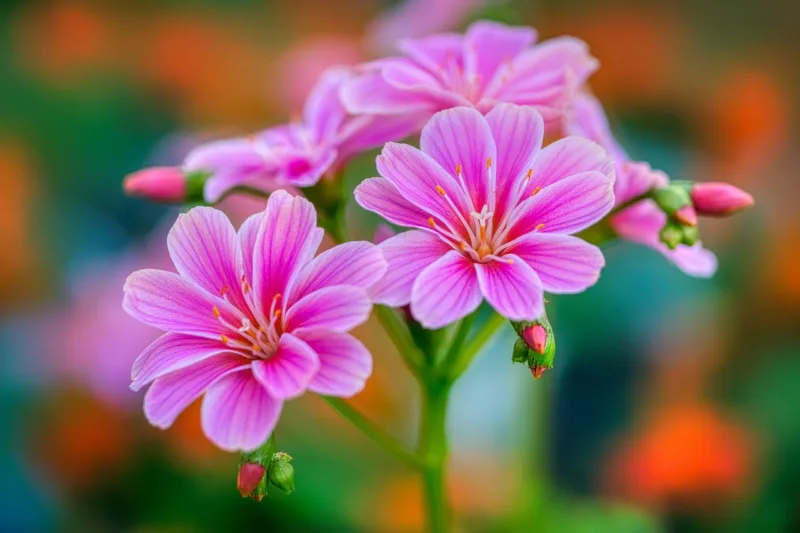
The plants in your garden will interact with each other as they grow over time. Some plants that were small when they were first introduced will grow tall or wide. Some will cast shade on the smaller plants, while others will begin to crowd them.
Some will act as “micro-windbreaks” which can increase temperatures or harbor diseases such as powdery mildew, while others will create a “rain shadow”, depriving smaller plants of moisture.
They will also grow at different rates, with certain plants achieving maturity in a single year, while others may take 5 years to establish, during which time they are unable to compete with their more vigorous neighbors.
It can only take a year or two for vigorous perennials or shrubs to exceed their bounds. Usually, in a couple of years, one or two plants will emerge as dominant in your garden, while a couple of the weaker or slower-growing ones (and usually the most valuable ones!) will have been choked out.
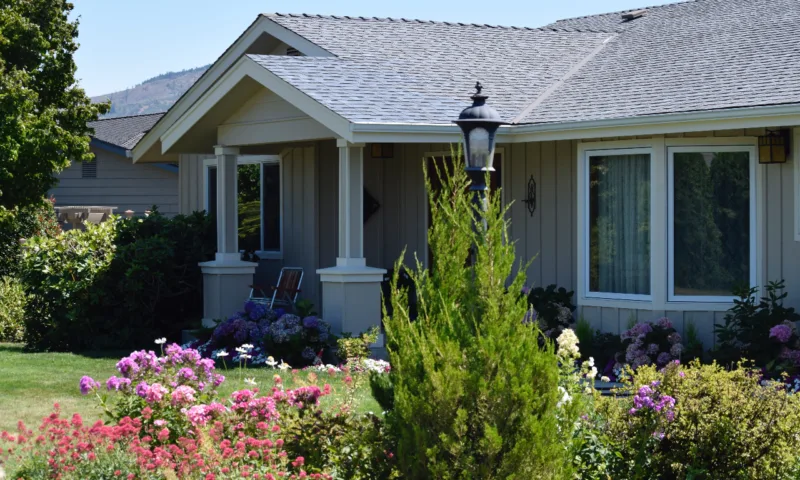
Then there are competitive considerations from beyond the garden. Trees will begin to cast shade as they mature, turning a brightly lit sunny border into a shade garden.
Even more significantly, roots from neighboring trees can eventually wander into the garden, competing with the perennials and bedding plants for moisture (and usually winning the competition).
Turf grass is only too willing to wander into the garden through a poorly kept or constructed border, and will quickly take over to the detriment of everything else. And let’s not forget the weeds which wander in every year from beyond – they are the poster children of undesirable competition!
Finally, and most importantly, plants share their individual characteristics with each other in such a close environment as found in a garden, and that includes all of their bad or undesirable habits.
Most of these characteristics are related to the way they multiply and propagate. After all, reproduction and survival of the species is the most ruthless struggle in all of nature!
Read Also:
- Tropical-Looking Plants for Northern Landscapes: 5 “Must-Haves” for the Creative Designer
- Getting Tender Plants Through Winter Exploring The Science Behind Winter Protection
- Seeking the “Out-Of Zone” Experience: Tips for Gardeners Who Push the Limits
- 10 Helpful Tips for Spring Planting
- Small Gardens: Choose Perennials!
Aggressive Plant Characteristics
You’ve probably heard the terms “invasive” and “aggressive” used as descriptions of certain plants’ behaviors.
These qualifiers generally describe plants with highly competitive methods of reproduction or propagation, which under the right circumstances (and often that’s just being in a garden) will eventually overtake the entire garden without human intervention (i.e. from you the gardener). Such plants spread readily, and exceed their gardener-imposed bounds in short order.
On the good side, they make excellent groundcovers, but that’s not exactly a desirable attribute in a conventional mixed border!
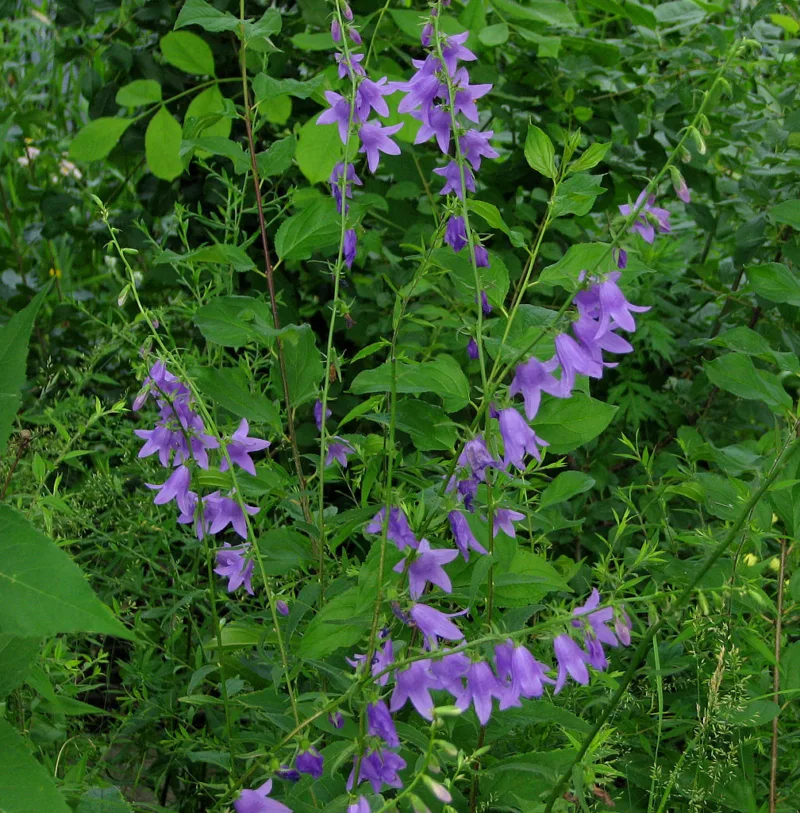
Many vigorous plants spread and propagate by vegetative means, that is by employing plant parts to spread as opposed to generating new plants through seed. There are a number of related ways under this umbrella.
Suckering is when new plants sprout from nodes on the roots of the parent plant a good distance away. A number of highly aggressive trees and shrubs spread in this manner, which is one of the fastest ways that a single plant can overtake an entire garden.
Plants can also spread by runners, which are basically special stems that extend away from the parent plant and are capable of sprouting new plants from special nodes along these stems.
When they extend below the surface of the soil, such stems are referred to as rhizomes, which are different from roots in that their primary purpose is to spread the plant.
When they traverse above the soil, they are referred to as stolons. And the actual branches of certain plants are capable of developing into new plants at leaf nodes if they touch the soil.
In fact, the propagation technique called “layering” uses this method to produce new plants.
Some plants expand with a little less vigor by creating new plants at the periphery of their crowns in subsequent growing seasons. Often times this will result in a massive plant that grows concentrically away from the center, while the plants at the center eventually die out.
Plants such as chrysanthemums and yarrow are quite effective at spreading in this manner, and can even take over a garden in a few short years!
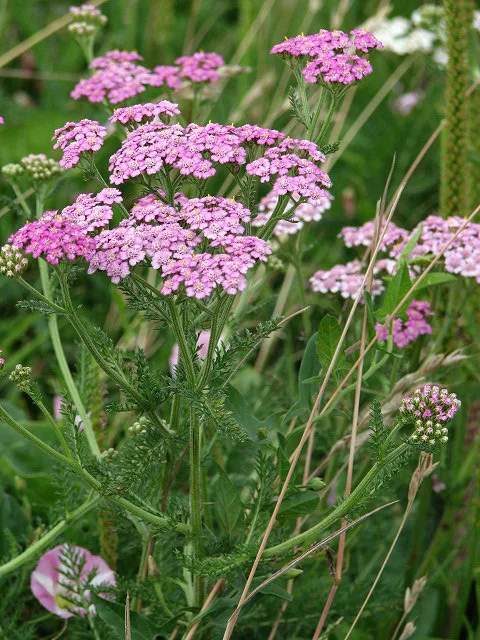
And let’s not count out the “traditional” way of plant reproduction, which is by seed. Many plants are prolific self-seeders, producing copious quantities of seed which will sprout with a surprising germination success rate in the most inconvenient of places, most often among other less aggressive garden plants.
Some trees, like the Siberian elm, are notorious for populating an entire garden in seedlings in a single season. Countless perennials also spread this way, not to mention most of our common garden weeds.
But garden plants do not only compete with each other for the purposes of reproduction. Many plants have extensive root systems which are highly efficient at drawing water from the soil.
These “water hogs” can dry out the soil in no time, creating a virtual drought for any less competitive plants growing nearby and eventually killing them. Certain plants exhibit a tendency known as allelopathy, in which their roots secrete substances into the soil that are toxic to other species.
Among these are walnut trees and possibly nine barks, both of which can “clear” an area free of competition underneath their canopies by this means. Obviously, these plants do not make good garden neighbors!
Controlling Aggression
By now, you should appreciate just how complex the interaction is between plants in a garden environment. If left to its own devices, a garden will eventually be overtaken by dominant plants, those that are the most competitive and the best adapted to the specific conditions found there.
Without proper attention, your garden will not resemble anything close to your original vision!
The first key to controlling competition in a garden is knowledge of your plants. It is very important that the gardener understands which plants are invasive or aggressive, which are good neighbors, and which are intolerant of competition.
The gardener must also know the ultimate height, spread, growth rate, and growth habit of every plant in the garden, and understand the degree of maintenance that each will demand.
The second key is planning. Armed with the knowledge of how every plant will grow and spread over time, the astute garden designer will lay out an effective and well-thought-out plan long before a spade ever hits the ground.
Plants will be grouped according to their preferences and growth habits. Competitive plants will be kept well away from the intolerant treasures, and plants will be allowed to grow gracefully into each other over time.
The dynamics of the mature form of the garden will have been foreseen, taking into account things like rain shadows, drought perimeters, and windbreaks. And the maintenance requirements of each plant will have been anticipated rather than an unpleasant surprise.
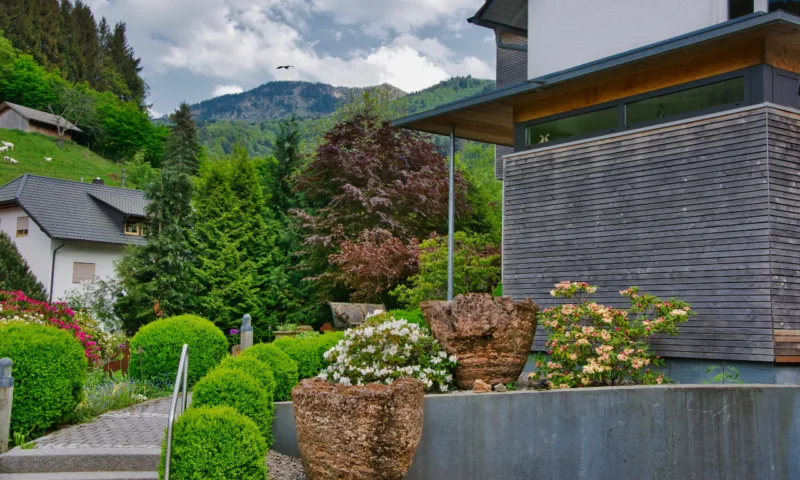
Last but not least, no garden can survive forever without human intervention. If left unattended, Nature herself will eventually wrestle control of your design and work her way on it.
It’s called maintenance, and no garden will thrive for long without it. Sorry, Virginia, but there’s no such thing as a zero-maintenance garden!
Maintenance in a garden context means knowing which perennials need dividing, and how often. It means pulling out rhizomes and stolons once or twice a year to keep vigorous spreaders in check.
It means deadheading spent flowers and removing seed heads from prolific self-seeders to prevent an assault on your garden the following season.
And it also means knowing when it’s time for a major overhaul to accommodate changing conditions and wandering plants.
But don’t despair, because all gardeners can create joy out of this process. With proper planning, knowledge, and a commitment to tending your garden, it can perform for many long years!
